Samsung Electronics History: From Dried Fish to High Tech
Hi, Habr!
You always warmly welcomed my posts on the subject of history - for example, about Nintendo , navigators , smart watches and Soviet computers . This time, Samsung, one of the largest manufacturers of high-tech components and telecommunications equipment, came under the distribution. I hope that this time you will like the post.
Of course, it would not have been possible to tell everything at once - since Samsung produces too much, including construction equipment, chemicals and food products. Here, only the major milestones - as the creation of the first serial Blu-ray player, curved TVs, smart watches, android phones and badphones.
')

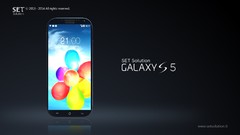

I wonder, do you remember this balloon? I was three or four years old when, in the early 1990s, we bought either a television set or a video recorder in a big blue box with such a pattern. No photos on the network could not be found, unfortunately.

Back in 1910, Lee Bin Chol was born. His father was a large landowner, so he could afford to send his son to the University of Tokyo. After the death of his father, Lee Bin Chol uses the inheritance in order to open his own business - although at that time in South Korea it was not an easy task, since the country was a Japanese colony.
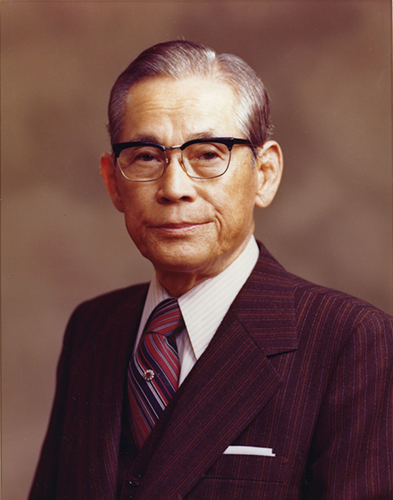
On the image - a warehouse in the city of Daegu, from which the history of Samsung began.
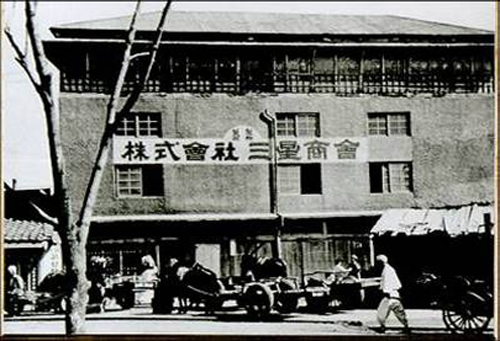
In 1938, the name Samsung Trading Company appeared - then it was a company exporting goods to China and Manchuria. The entrepreneur did not stop there and founded several other companies that were engaged in the production of sugar and fabric, as well as an insurance company.
Lee Bin Chol passed away in 1987.
In the 1960s, Samsung began the era of black and white TVs. The company combines with Sanyo and launches its first black and white TV with the designation p-3202. In 1976, the millionth b / w television company was produced.
To start the production of TVs, Samsung-Sanyo Electronics was formed, renamed Samsung Electro-Mechanics in 1975 and became Samsung Electronics in 1977.
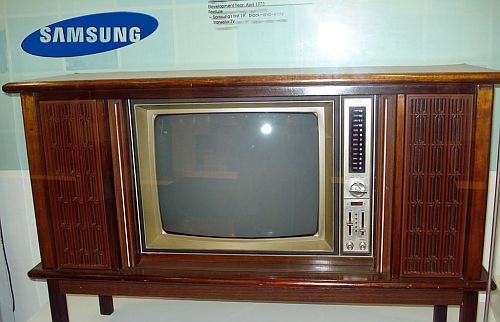
In 1987, an institute was created, which began developing new products. As soon as international laws allowed in the 1990s, Samsung immediately began exporting televisions around the world. Together with Sony, the company was engaged in the development of liquid crystal displays. In the late 1990s, Samsung produced the largest 30-inch LCD displays.
One of the models of 1997.
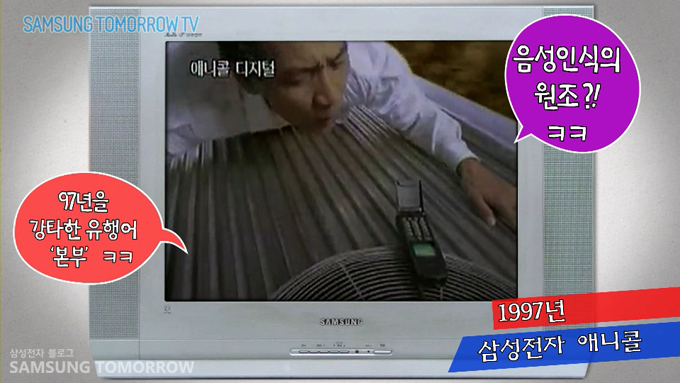
In 1998, the company began producing flat-screen TVs. At the beginning of this century, the company was leading the industry by creating the thinnest TV in 2002 and the world's first two-way liquid crystal display in 2006. In 2005, the largest OLED panel was 21 inches, and it was made by Samsung.
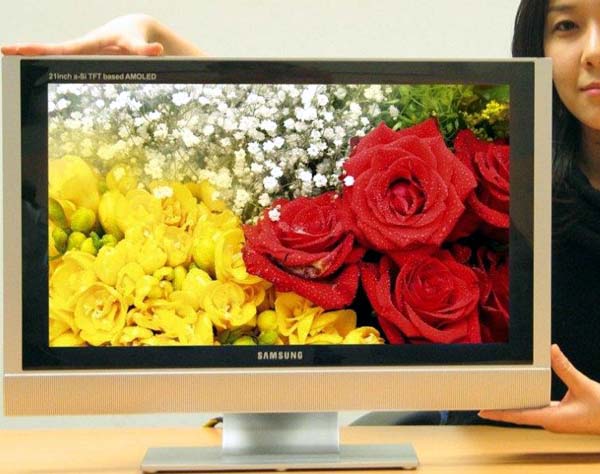
The world's first serial Blu-ray player released by Samsung in 2006. The model received the designation BD-P1000. The release of the player helped Blu-ray to win the “War of Formats”, and after a couple of years HD DVDs were stopped. The latest from HD DVD refused company Warner Brothers.
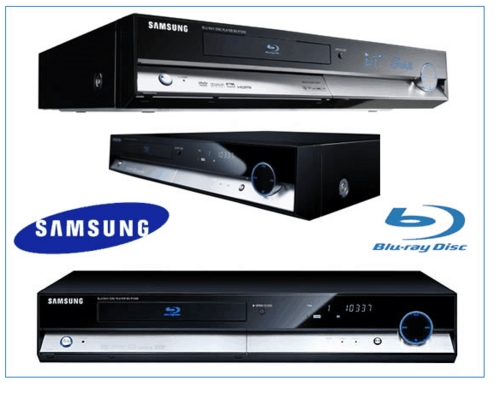
In 2007, Samsung presented Internet TV - the ability to simultaneously watch TV shows and receive information from these of your Internet. A little later, Samsung Smart TV appeared .
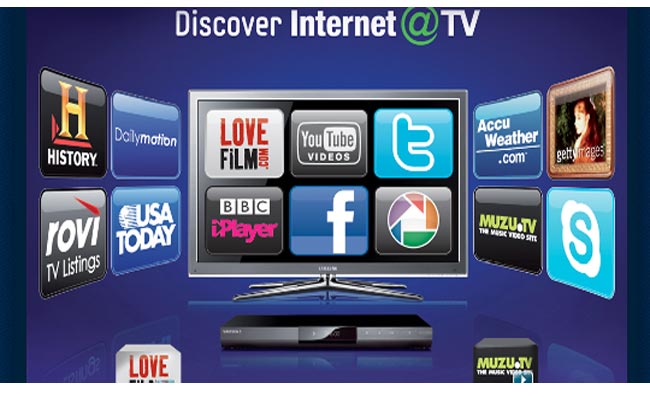

In 2010, sales of Samsung 3D TVs began. Over the first six months, they bought over a million copies. The company became the first in the industry to have a full range of 3D equipment for the home: TVs, Blu-ray players, content and glasses.

The world's first curved UHD TV was introduced by Samsung in 2014 at CES. The diagonal of the TV is 105 inches, the aspect ratio is 21: 9. The screen resolution is 5120 x 2160 pixels. Auto Depth Enhancer technology allows you to view 3D movies without glasses. The company’s UHD line-up now includes a dozen models. On these "smart" TVs, you can also play games from Electronic Arts (EA) and Gameloft. The brains are the quad-core processor from Samsung.
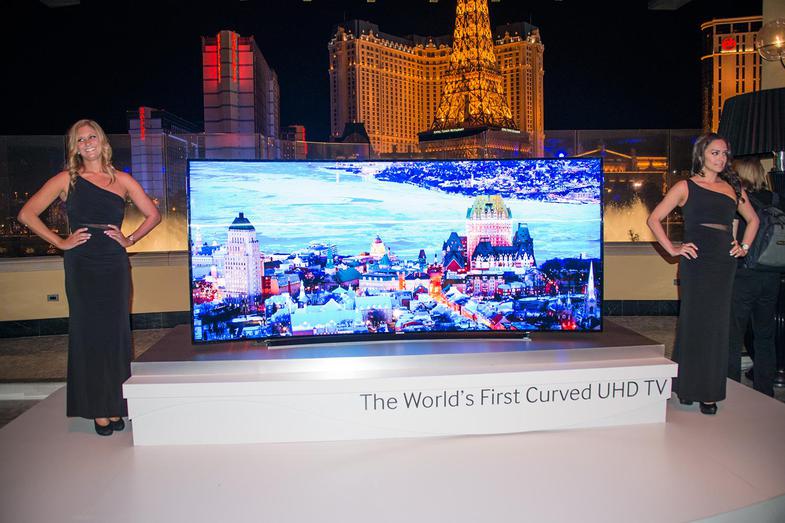
Samsung entered the telecommunications market in 1977, forming the Samsung Telecommunications division, which became part of the Samsung Group. The division was created for the production of mobile phones and other portable devices - laptops, music players, as well as network equipment.
10 years after the opening of the division, in 1988, the SH-100 cell phone entered the Korean market. Not only is this the first cell made by Samsung, it is also the first cell made in Korea, because the gadget is very symbolic.

SH-700 was released in 1993. It was an "ultra-light" cell phone - it weighed only one hundred grams. It was much smaller than the phones offered at that time by other companies.
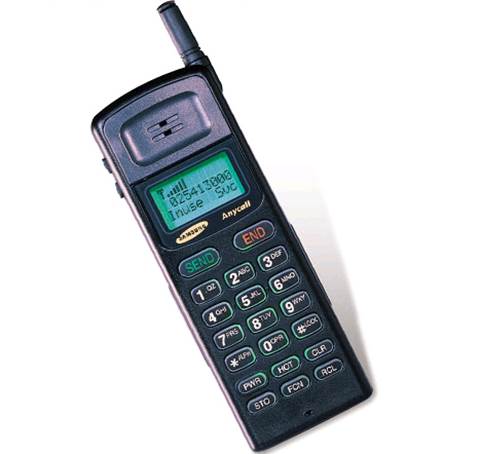
In 2003, the clamshell SPH-A500 was one of the easiest, comfortable and stylish.

In the same year, Samsung unveiled its first phone on Windows Mobile 2002. It was the SCH-i600. Concurrently, this is the first cellular company working with 3G.
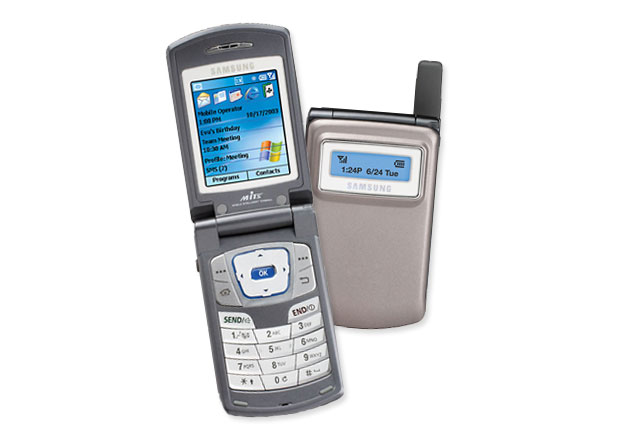
The 2004 model of the A790 was the first CDMA- and GSM compatible Samsung phone. This clamshell also has two displays, the diagonal of the inner one is 2.35 inches. By the way, there was no speakerphone and e-mail support in it.
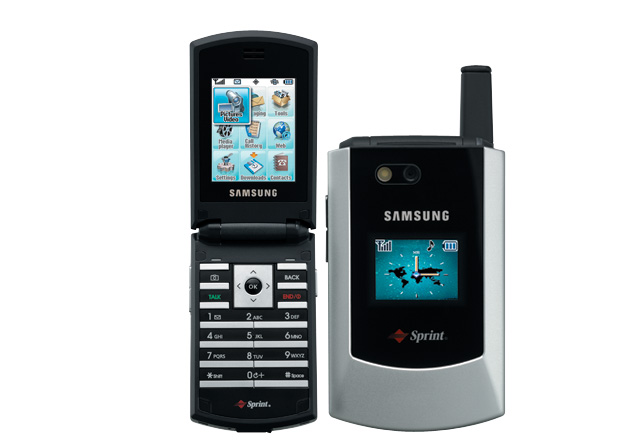
And here is one of the first camera phones! The Samsung MM-A800 slider, debuted in 2005, became the first cellular with a 2 megapixel camera in the United States. But he had a flaw: he did not work on 3G networks.
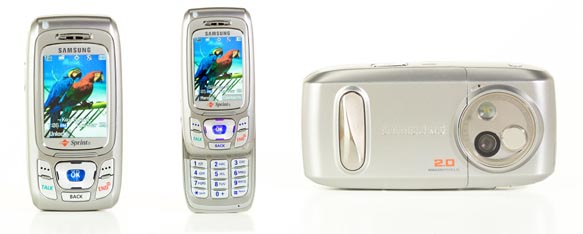
Slim and attractive U600 - slider with 2.2 inch display. Now the navigation button is not trapezoidal, as in previous models, but round.
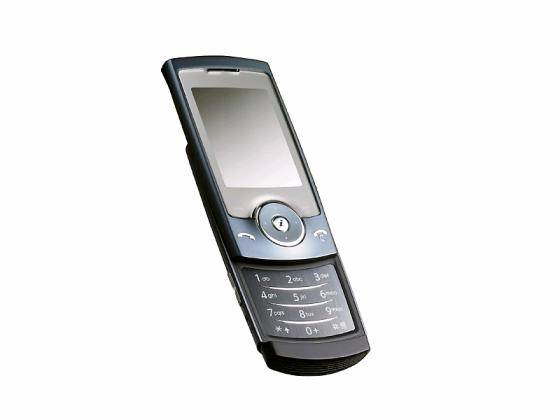
Samsung BlackJack in 2003 was a dream for many. He worked in 3G and had a keyboard. In my opinion, it was a great business class phone at the time. Suddenly, the company was attacked by Trolls from RIM - they were sure that consumers could not distinguish Blackberry from Blackjack.
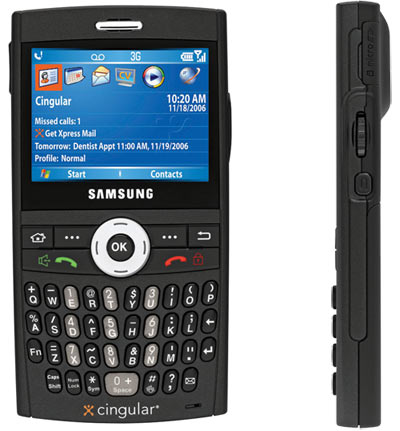
After 4 years, the Samsung Ultra II line went on sale in Russia.
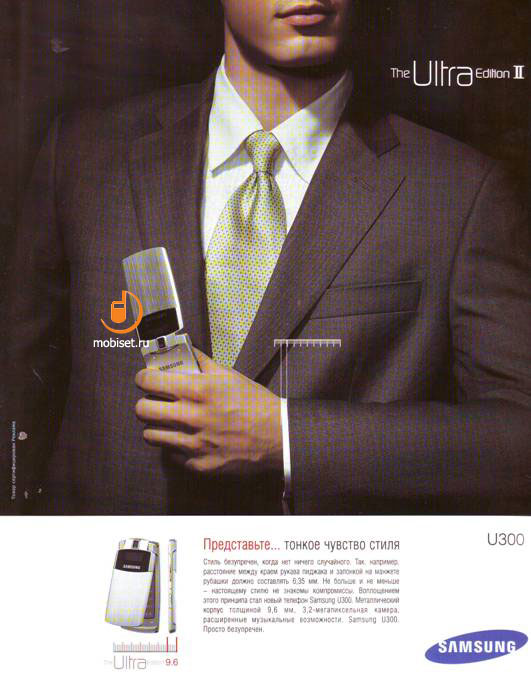
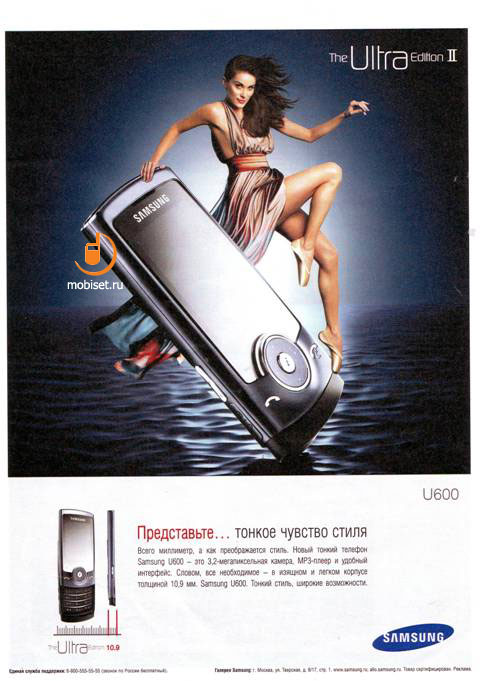
The first touchscreen phone Samsung released in 2008. This cell could boast flash-3D effects, gesture control and tactile feedback. Which, however, I always turn off when I take a new gadget in my hands.

And here is one of the first Android smartphones - I7500 - appeared in 2009, it was the very first Galaxy. It had a 3.2-inch AMOLED display, connected to Wi-Fi, had a built-in GPS receiver. Thickness - just 11.9 millimeters.

In 2010, the first smartphone was released, working with the bada 1.0 operating system. It was the flagship Samsung Wave S8500. The operating system lived only a few years, until in February 2013 Samsung did not announce the merger of bada with Tizen, thereby declaring the end of bada. Who owned this smartphone - which games were played ?
Smartphone Wave S8500 is worth noting for its display - for the first time SuperAMOLED was used. The Super Active Matrix Organic Light-Emitting Diode technology assumes that the touch layer is glued to the screen, which eliminates the air gap in between. Thus, these displays have higher clarity, images are better visible in the sun, colors are richer, and the display itself is thinner.

Samsung Galaxy S was released in 2010. It is based on the 1GHz ARM processor "Hummingbird", had a 4-inch display and a 5-megapixel camera.
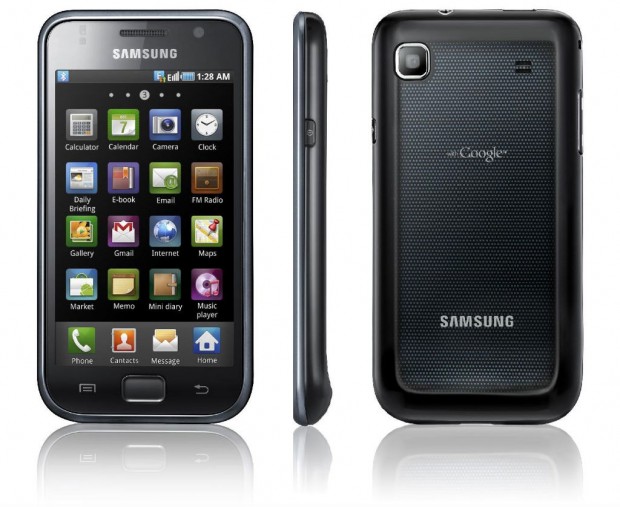
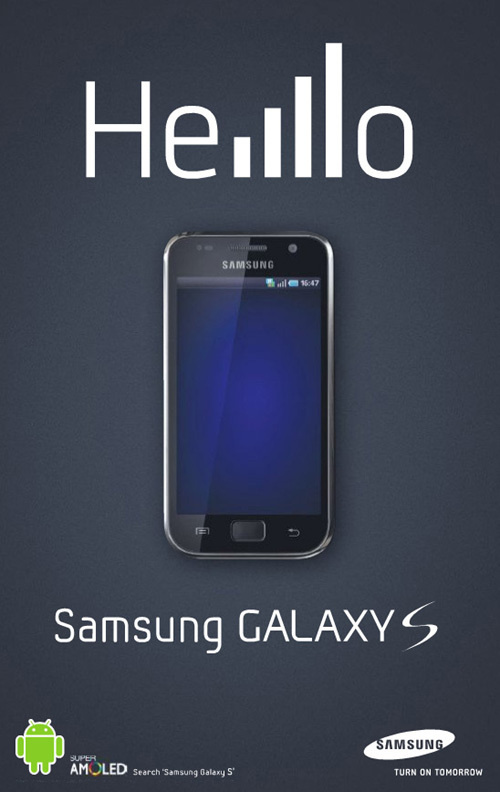
In November of the same year, Eric Schmidt introduced the Nexus S , a smartphone that Samsung and Google worked on jointly. The smartphone was built on the basis of the Exynos 3110 processor, which worked in conjunction with 512MB of RAM. But he did not have an expansion slot - he had to limit himself to the built-in 16GB. Not the best tradition.


In 2011, the Galaxy S II was presented at the Mobile World Congress in Barcelon. Thanks to this model, in the third quarter of 2011, Samsung overtook Apple in smartphone sales. The smartphone is equipped with a 4.27-inch SUPER AMOLED Plus display.
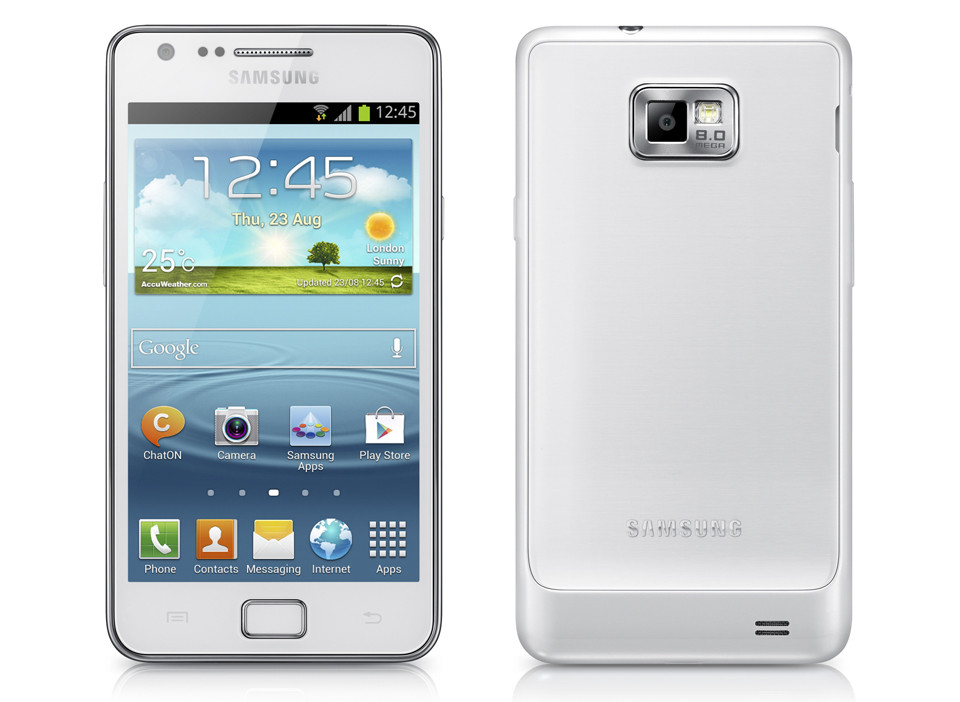

The flagship of 2012 were the Samsung Galaxy S III Apple iPhone 5 and the Nokia Lumia 920. Samsung’s most anticipated smartphone of 2011 caused a lot of rumors, which in the end did not materialize. But users got an excellent smartphone based on Exynos 4412 1.4 GHz quad-core processor, equipped with a HD SuperAMOLED display with a diagonal of 4.8 inches, 1 GB of RAM, a 2100 mAh battery and an 8-megapixel camera. The company's Smart Stay feature enabled the front camera to recognize the user's gaze and not turn off the display if the gaze was on it.
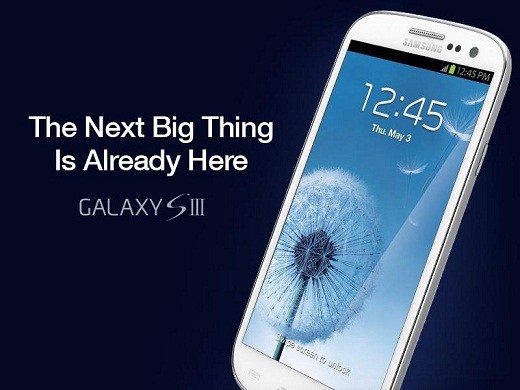
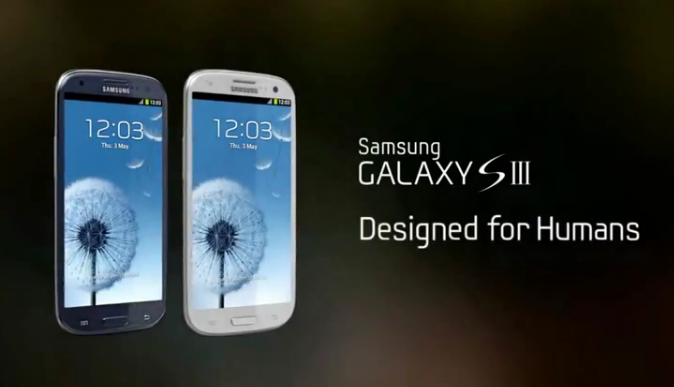
In this ad, the Galaxy S3 is compared to the iPhone 5. “You don't need to be a genius.”

In 2012, the company overtook all the sales of smartphones.

Then there was the Galaxy S4, which is not morally obsolete soon.

In April of this year, sales of the Samsung Galaxy S5, the company's new flagship, will begin. The smartphone is built on a quad-core Qualcomm Snapdragon 801 2.5 GHz.


As a nice addition, the model received a fingerprint scanner and heart rate monitor. And the Galaxy S5 16 megapixel main camera is built using Samsung's ISOCELL technology. The essence of the technology is the creation of a physical barrier between neighboring pixels, which “allows a greater number of photons to accurately come from a specific microlens and assemble in the desired photodiode with a minimum level of unwanted electrical crosstalk between pixels.”

One of the pioneers in the field of "smart watches" was the company Samsung. In 1999, the Samsung SPH-WP10, a wrist phone in the form factor of watches, went on sale. The project could be as revolutionary as smartphones. But at that moment, for some reason, it seemed to everyone that it was stylish, but no more. And now, in 2014, we see that “smart watches” have become very popular.
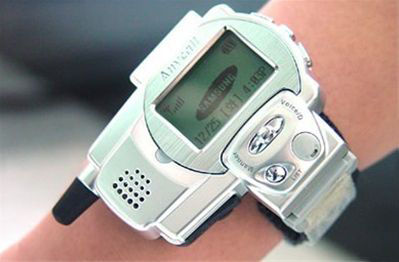
In 2001, Samsung brought a new hybrid of watches and cell phones to CES in Las Vegas, which looks much more interesting. The gadget had a monochrome display and understood the voice commands after pressing the appropriate button.

Smart watches stubbornly did not want to become trends! But Samsung did not give up and again presented a gadget of such a form factor in 2009. The Samsung S9110 had a touchscreen display.
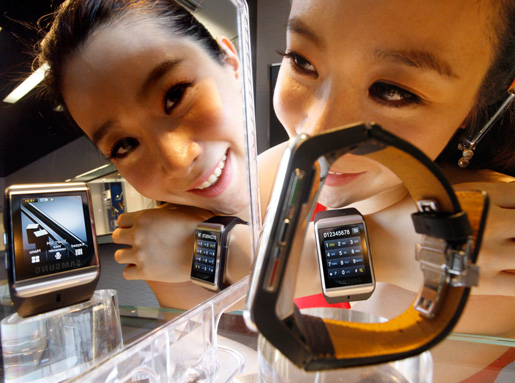
In October, Samsung again made an attempt to seize the market for these devices, presenting the Samsung Galaxy Gear to the world.

The continuation was Samsung Galaxy Gear 2. They no longer work on Android, but on Tizen's own operating system, thanks to which the usage time increased up to 2-3 days with normal use and up to 6 days “with little” use of functions.

Samsung Gear Fit is positioned as the industry's first wearable device with a curved Super AMOLED display. The gadget can be used independently as a fitness tracker, and can work in conjunction with a smartphone. The 1.84 inch display shows incoming calls, mail and messages, reminders, scheduler alerts and other applications. Replaceable straps - there are black, orange and mocha. Sales will start next month.
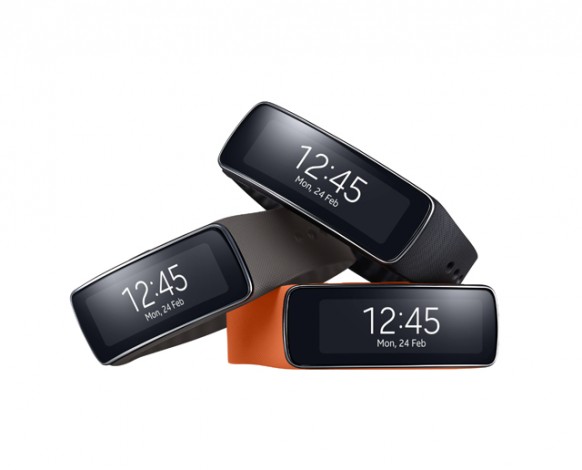
For those who want to develop applications for wearable electronics, Samsung has released the Tizen SDK for Wearable , available for download .
The first Samsung personal computer appeared only on the Korean market in 1982 and was produced until 1986. The model received the designation SPC-1000. The computer is based on the Z80 processor, made in Korea, although BASIC for it was created in Japan by Hudson soft. He had 70 KB of RAM.
On the left side of the case there is an ILP button that starts loading the operating system from a magnetic cassette.

The 1984 commercial.
Samsung became the first laptop S5200, released in 1989 for the Korean market.
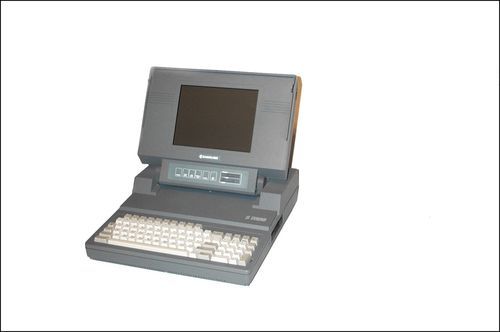
Samsung entered the global notebook market in 2003 with several lines under the letter symbols. The Samsung X-10, introduced at CeBit that year, was built on an Intel Pentium M Centrino 1.3-1.7 GHz, had 512 MB of RAM, a 60 GB hard drive, a 64 MB video card, a DVD / CDRW drive and WIFI 802.11b. The laptop weighed 1.8 kg, and its thickness - 2.38 cm.
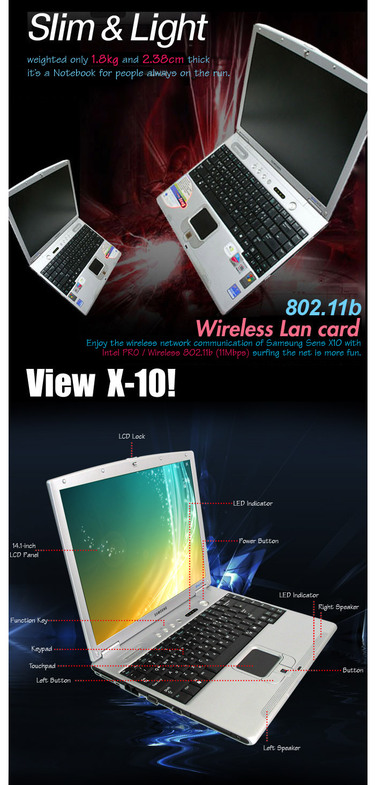
In 2005, the Samsung M70 transformer appeared. The laptop display could be detached and attached to the stand, which turned it into anelegant home computer shorts .

In states, sales of Samsung laptops began quite recently - in 2009. The first on sale appeared 13-inch Samsung Q310 in two versions. The younger model was equipped with an Intel Core 2 Duo T5800 2.0GHz processor and a 250 GB hard drive, the older one - an Intel Core 2 Duo P8400 with 320 GB of memory.
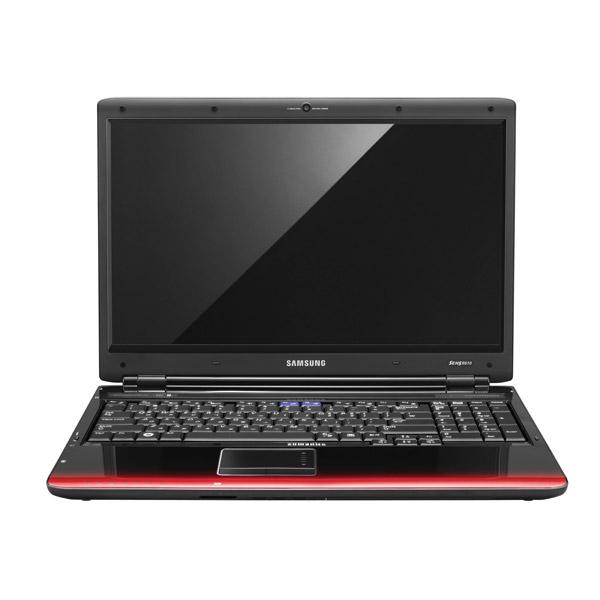
In 2010, the line of the Samsung Galaxy Tab takes its origin. The first model has a 7-inch touch screen with a resolution of 1024 x 600 pixels and an ARM processor with a frequency of 1000 MHz.

Samsung Galaxy Tab 7.7 (GT-P6800), introduced in 2012, became the world's first tablet computer with a Super AMOLED Plus screen.

The good news for Samsung was this year the ban for Russian officials to use the iPad. According to the head of the Ministry of Communications and Mass Media, Nikolai Nikiforov, such a decision regarding tablets is technical in nature, and Samsung tablets for officials are “specially protected devices”.
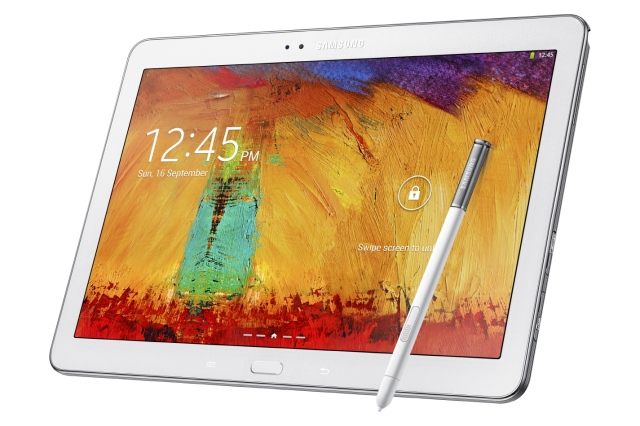
Earlier this year, the Samsung tablet line continued with the Pro series. The first appeared Galaxy Note Pro 12.2 and Tab Pro 12.2, 10.1 and 8.4 inches. Screen resolution - 2560 x 1600 pixels.

In May of this year, Samsung plans to release a second series of Chromebooks . They will be available with 11.6 and 13.3 inch displays. Shells are stylized under the skin.
The 13.3-inch version has a Full HD resolution of 1920x1080 pixels and is equipped with 4 GB of RAM. Version with a 11.6-inch display has a resolution of 1366x768 and 2 GB of RAM. Each of the laptops has a 16 GB eMMC iNAND drive, HDMI and USB 2.0 / 3.0 connectors, microSD card slots, a pair of 2 W speakers and a webcam with HD shooting.


In Korea, too, had its own Sega Saturn - only made her Samsung. Sales started in November 1994. It was just impossible not to mention her.


It is interesting:
Old advertisements for cell phones and smartphones (from the 1980s to the end of the 2000s)
Nintendo story led by Hiroshi Yamauchi
The history of smart watches
To health! Wearable devices in sports and medicine
You always warmly welcomed my posts on the subject of history - for example, about Nintendo , navigators , smart watches and Soviet computers . This time, Samsung, one of the largest manufacturers of high-tech components and telecommunications equipment, came under the distribution. I hope that this time you will like the post.
Of course, it would not have been possible to tell everything at once - since Samsung produces too much, including construction equipment, chemicals and food products. Here, only the major milestones - as the creation of the first serial Blu-ray player, curved TVs, smart watches, android phones and badphones.
')



I wonder, do you remember this balloon? I was three or four years old when, in the early 1990s, we bought either a television set or a video recorder in a big blue box with such a pattern. No photos on the network could not be found, unfortunately.

Back in 1910, Lee Bin Chol was born. His father was a large landowner, so he could afford to send his son to the University of Tokyo. After the death of his father, Lee Bin Chol uses the inheritance in order to open his own business - although at that time in South Korea it was not an easy task, since the country was a Japanese colony.

On the image - a warehouse in the city of Daegu, from which the history of Samsung began.

In 1938, the name Samsung Trading Company appeared - then it was a company exporting goods to China and Manchuria. The entrepreneur did not stop there and founded several other companies that were engaged in the production of sugar and fabric, as well as an insurance company.
Lee Bin Chol passed away in 1987.
TVs
In the 1960s, Samsung began the era of black and white TVs. The company combines with Sanyo and launches its first black and white TV with the designation p-3202. In 1976, the millionth b / w television company was produced.
To start the production of TVs, Samsung-Sanyo Electronics was formed, renamed Samsung Electro-Mechanics in 1975 and became Samsung Electronics in 1977.

In 1987, an institute was created, which began developing new products. As soon as international laws allowed in the 1990s, Samsung immediately began exporting televisions around the world. Together with Sony, the company was engaged in the development of liquid crystal displays. In the late 1990s, Samsung produced the largest 30-inch LCD displays.
One of the models of 1997.

In 1998, the company began producing flat-screen TVs. At the beginning of this century, the company was leading the industry by creating the thinnest TV in 2002 and the world's first two-way liquid crystal display in 2006. In 2005, the largest OLED panel was 21 inches, and it was made by Samsung.

The world's first serial Blu-ray player released by Samsung in 2006. The model received the designation BD-P1000. The release of the player helped Blu-ray to win the “War of Formats”, and after a couple of years HD DVDs were stopped. The latest from HD DVD refused company Warner Brothers.

In 2007, Samsung presented Internet TV - the ability to simultaneously watch TV shows and receive information from these of your Internet. A little later, Samsung Smart TV appeared .


In 2010, sales of Samsung 3D TVs began. Over the first six months, they bought over a million copies. The company became the first in the industry to have a full range of 3D equipment for the home: TVs, Blu-ray players, content and glasses.

The world's first curved UHD TV was introduced by Samsung in 2014 at CES. The diagonal of the TV is 105 inches, the aspect ratio is 21: 9. The screen resolution is 5120 x 2160 pixels. Auto Depth Enhancer technology allows you to view 3D movies without glasses. The company’s UHD line-up now includes a dozen models. On these "smart" TVs, you can also play games from Electronic Arts (EA) and Gameloft. The brains are the quad-core processor from Samsung.

Cell phones and smartphones
Samsung entered the telecommunications market in 1977, forming the Samsung Telecommunications division, which became part of the Samsung Group. The division was created for the production of mobile phones and other portable devices - laptops, music players, as well as network equipment.
10 years after the opening of the division, in 1988, the SH-100 cell phone entered the Korean market. Not only is this the first cell made by Samsung, it is also the first cell made in Korea, because the gadget is very symbolic.

SH-700 was released in 1993. It was an "ultra-light" cell phone - it weighed only one hundred grams. It was much smaller than the phones offered at that time by other companies.

In 2003, the clamshell SPH-A500 was one of the easiest, comfortable and stylish.

In the same year, Samsung unveiled its first phone on Windows Mobile 2002. It was the SCH-i600. Concurrently, this is the first cellular company working with 3G.

The 2004 model of the A790 was the first CDMA- and GSM compatible Samsung phone. This clamshell also has two displays, the diagonal of the inner one is 2.35 inches. By the way, there was no speakerphone and e-mail support in it.

And here is one of the first camera phones! The Samsung MM-A800 slider, debuted in 2005, became the first cellular with a 2 megapixel camera in the United States. But he had a flaw: he did not work on 3G networks.

Slim and attractive U600 - slider with 2.2 inch display. Now the navigation button is not trapezoidal, as in previous models, but round.

Samsung BlackJack in 2003 was a dream for many. He worked in 3G and had a keyboard. In my opinion, it was a great business class phone at the time. Suddenly, the company was attacked by Trolls from RIM - they were sure that consumers could not distinguish Blackberry from Blackjack.

After 4 years, the Samsung Ultra II line went on sale in Russia.


The first touchscreen phone Samsung released in 2008. This cell could boast flash-3D effects, gesture control and tactile feedback. Which, however, I always turn off when I take a new gadget in my hands.

And here is one of the first Android smartphones - I7500 - appeared in 2009, it was the very first Galaxy. It had a 3.2-inch AMOLED display, connected to Wi-Fi, had a built-in GPS receiver. Thickness - just 11.9 millimeters.

In 2010, the first smartphone was released, working with the bada 1.0 operating system. It was the flagship Samsung Wave S8500. The operating system lived only a few years, until in February 2013 Samsung did not announce the merger of bada with Tizen, thereby declaring the end of bada. Who owned this smartphone - which games were played ?
Smartphone Wave S8500 is worth noting for its display - for the first time SuperAMOLED was used. The Super Active Matrix Organic Light-Emitting Diode technology assumes that the touch layer is glued to the screen, which eliminates the air gap in between. Thus, these displays have higher clarity, images are better visible in the sun, colors are richer, and the display itself is thinner.
Specifications Samsung Wave S8500
Operating system: bada
Processor: Samsung Exynos 3110, 1000 MHz
Video Processor: PowerVR SGX540
Display: 3.3 inch SuperAMOLED
Built-in memory: 2 GB
Memory Card Support: microSD (TransFlash), up to 32 GB
Camera: 5 Mp., 2560x1920, built-in flash
Standard: GSM 900/1800/1900, 3G
Interfaces: Wi-Fi, Bluetooth 3.0, USB
Battery capacity: 1500 mAh
Weight: 118 g
Dimensions: 56x118x11 mm
Processor: Samsung Exynos 3110, 1000 MHz
Video Processor: PowerVR SGX540
Display: 3.3 inch SuperAMOLED
Built-in memory: 2 GB
Memory Card Support: microSD (TransFlash), up to 32 GB
Camera: 5 Mp., 2560x1920, built-in flash
Standard: GSM 900/1800/1900, 3G
Interfaces: Wi-Fi, Bluetooth 3.0, USB
Battery capacity: 1500 mAh
Weight: 118 g
Dimensions: 56x118x11 mm

Samsung Galaxy S was released in 2010. It is based on the 1GHz ARM processor "Hummingbird", had a 4-inch display and a 5-megapixel camera.


In November of the same year, Eric Schmidt introduced the Nexus S , a smartphone that Samsung and Google worked on jointly. The smartphone was built on the basis of the Exynos 3110 processor, which worked in conjunction with 512MB of RAM. But he did not have an expansion slot - he had to limit himself to the built-in 16GB. Not the best tradition.
Google Nexus S specs
Processor: Cortex A8 (Hummingbird), 1000 MHz
Video accelerator: PowerVR SGX540
Memory: ROM 16 GB, RAM 512 MB
Operating system: Android 2.3
Standards: GSM 850/900/1800/1900, WCDMA 900/2100
Screen: Super AMOLED, 4 ″, 480x800 points, touchscreen, capacitive
Interfaces: USB 2.0 (microUSB), Bluetooth 2.1 + EDR (A2DP), Wi-Fi 802.11 b / g / n
Built-in camera: 5 MP, autofocus, widescreen, flash, geotagging
Battery, autonomy: Li-Ion, 1500 mA • h, 1–2 days
Additional features: GPS (pre-installed maps), MS Exchange, synchronization with Google services
Video accelerator: PowerVR SGX540
Memory: ROM 16 GB, RAM 512 MB
Operating system: Android 2.3
Standards: GSM 850/900/1800/1900, WCDMA 900/2100
Screen: Super AMOLED, 4 ″, 480x800 points, touchscreen, capacitive
Interfaces: USB 2.0 (microUSB), Bluetooth 2.1 + EDR (A2DP), Wi-Fi 802.11 b / g / n
Built-in camera: 5 MP, autofocus, widescreen, flash, geotagging
Battery, autonomy: Li-Ion, 1500 mA • h, 1–2 days
Additional features: GPS (pre-installed maps), MS Exchange, synchronization with Google services


In 2011, the Galaxy S II was presented at the Mobile World Congress in Barcelon. Thanks to this model, in the third quarter of 2011, Samsung overtook Apple in smartphone sales. The smartphone is equipped with a 4.27-inch SUPER AMOLED Plus display.


The flagship of 2012 were the Samsung Galaxy S III Apple iPhone 5 and the Nokia Lumia 920. Samsung’s most anticipated smartphone of 2011 caused a lot of rumors, which in the end did not materialize. But users got an excellent smartphone based on Exynos 4412 1.4 GHz quad-core processor, equipped with a HD SuperAMOLED display with a diagonal of 4.8 inches, 1 GB of RAM, a 2100 mAh battery and an 8-megapixel camera. The company's Smart Stay feature enabled the front camera to recognize the user's gaze and not turn off the display if the gaze was on it.


In this ad, the Galaxy S3 is compared to the iPhone 5. “You don't need to be a genius.”

In 2012, the company overtook all the sales of smartphones.

Then there was the Galaxy S4, which is not morally obsolete soon.
Specifications of Samsung Galaxy S4
Processor: Eight-core Octa Core (1.6 GHz quad-core + 1.2 GHz Quad-core)
Display: 5 inch Full HD Super AMOLED 1920 x 1080
Operating system: Android 4.2.2 (Jelly Bean)
Battery: 2,600 mAh
Built-in memory: 16/32/64 GB
Main camera: 13 megapixels.
Front camera: 2 megapixels.
Flash: LED Power LED
Standard: GSM / GPRS / EDGE (850/900/1800/1900 MHz) HSPA + (850/900/1 900/2 100 MHz)
Wireless networks: Wi-Fi: 802.11 b / g / n, Wi-Fi Direct, Bluetooth 4.0, NFC
Positioning : GPS / GLONASS
Weight: 130 g
Dimensions: 136.6 x 69.8 x 7.9 mm
Display: 5 inch Full HD Super AMOLED 1920 x 1080
Operating system: Android 4.2.2 (Jelly Bean)
Battery: 2,600 mAh
Built-in memory: 16/32/64 GB
Main camera: 13 megapixels.
Front camera: 2 megapixels.
Flash: LED Power LED
Standard: GSM / GPRS / EDGE (850/900/1800/1900 MHz) HSPA + (850/900/1 900/2 100 MHz)
Wireless networks: Wi-Fi: 802.11 b / g / n, Wi-Fi Direct, Bluetooth 4.0, NFC
Positioning : GPS / GLONASS
Weight: 130 g
Dimensions: 136.6 x 69.8 x 7.9 mm

In April of this year, sales of the Samsung Galaxy S5, the company's new flagship, will begin. The smartphone is built on a quad-core Qualcomm Snapdragon 801 2.5 GHz.
Specifications of Samsung Galaxy S5
Processor : Qualcomm Snapdragon 800 MSM8974 2.5 GHz quad-core
Built-in memory: 16 GB / 32 GB
Screen: 5.1 "1920x1080 PPI 432
OS: Android 4.4
Main camera: 16 MP
Front camera: 2 MP
RAM: 2 GB
Memory card : microSD (TransFlash) up to 128 GB
Cellular networks : GSM 850, 900, 1800, 1900; UMTS - 850, 900, 1900, 2100; GPRS, EDGE, 3G, 4G
Wi-Fi
Battery: 2800 mAh
Protection against moisture and dust: IP67
Weight: 145 g
Dimensions: 142x72,5x8,1 mm
Built-in memory: 16 GB / 32 GB
Screen: 5.1 "1920x1080 PPI 432
OS: Android 4.4
Main camera: 16 MP
Front camera: 2 MP
RAM: 2 GB
Memory card : microSD (TransFlash) up to 128 GB
Cellular networks : GSM 850, 900, 1800, 1900; UMTS - 850, 900, 1900, 2100; GPRS, EDGE, 3G, 4G
Wi-Fi
Battery: 2800 mAh
Protection against moisture and dust: IP67
Weight: 145 g
Dimensions: 142x72,5x8,1 mm


As a nice addition, the model received a fingerprint scanner and heart rate monitor. And the Galaxy S5 16 megapixel main camera is built using Samsung's ISOCELL technology. The essence of the technology is the creation of a physical barrier between neighboring pixels, which “allows a greater number of photons to accurately come from a specific microlens and assemble in the desired photodiode with a minimum level of unwanted electrical crosstalk between pixels.”

Wearable electronics
One of the pioneers in the field of "smart watches" was the company Samsung. In 1999, the Samsung SPH-WP10, a wrist phone in the form factor of watches, went on sale. The project could be as revolutionary as smartphones. But at that moment, for some reason, it seemed to everyone that it was stylish, but no more. And now, in 2014, we see that “smart watches” have become very popular.

In 2001, Samsung brought a new hybrid of watches and cell phones to CES in Las Vegas, which looks much more interesting. The gadget had a monochrome display and understood the voice commands after pressing the appropriate button.

Smart watches stubbornly did not want to become trends! But Samsung did not give up and again presented a gadget of such a form factor in 2009. The Samsung S9110 had a touchscreen display.

In October, Samsung again made an attempt to seize the market for these devices, presenting the Samsung Galaxy Gear to the world.

The continuation was Samsung Galaxy Gear 2. They no longer work on Android, but on Tizen's own operating system, thanks to which the usage time increased up to 2-3 days with normal use and up to 6 days “with little” use of functions.

Samsung Gear Fit is positioned as the industry's first wearable device with a curved Super AMOLED display. The gadget can be used independently as a fitness tracker, and can work in conjunction with a smartphone. The 1.84 inch display shows incoming calls, mail and messages, reminders, scheduler alerts and other applications. Replaceable straps - there are black, orange and mocha. Sales will start next month.
Specifications Samsung Gear Fit
Display: 1.84-inch curved Super AMOLED with a resolution of 432x128 pixels
Additional functions: pedometer, exercise, heart rate monitor, sleep tracking, stopwatch, timer
Protection against water and dust: IP67
Interface: Bluetooth 4.0 LE
Sensors: accelerometer, gyroscope, heart rate sensor
Battery: 210 mAh capacity
Battery life: 3 - 4 days (normal use), up to 5 days (economical use)
Dimensions: 23.4 x 57.4 x 11.95 mm
Weight: 27 grams
Additional functions: pedometer, exercise, heart rate monitor, sleep tracking, stopwatch, timer
Protection against water and dust: IP67
Interface: Bluetooth 4.0 LE
Sensors: accelerometer, gyroscope, heart rate sensor
Battery: 210 mAh capacity
Battery life: 3 - 4 days (normal use), up to 5 days (economical use)
Dimensions: 23.4 x 57.4 x 11.95 mm
Weight: 27 grams

For those who want to develop applications for wearable electronics, Samsung has released the Tizen SDK for Wearable , available for download .
Computers, laptops and tablets
The first Samsung personal computer appeared only on the Korean market in 1982 and was produced until 1986. The model received the designation SPC-1000. The computer is based on the Z80 processor, made in Korea, although BASIC for it was created in Japan by Hudson soft. He had 70 KB of RAM.
On the left side of the case there is an ILP button that starts loading the operating system from a magnetic cassette.
Specifications of Samsung SPC-1000
Processor: Z80-A 4 MHz
RAM: 64 KB
Video RAM: 6 KB
Read-only memory: 32 KB
Text display: 32 characters x 16 lines
Graphics: 128 x 192/256 x 192 pixels
Colors: 9 (semigraphic), 4 (128 x 192 mode), 2 (256 x 192 mode)
Sound: 3 voices, 8 octaves
Dimensions: 48 x 27.5 x 9.5 cm
Media: built-in cassette player
Operating system: CP / M with a connected floppy
Price: 495,000 won, about $ 600
RAM: 64 KB
Video RAM: 6 KB
Read-only memory: 32 KB
Text display: 32 characters x 16 lines
Graphics: 128 x 192/256 x 192 pixels
Colors: 9 (semigraphic), 4 (128 x 192 mode), 2 (256 x 192 mode)
Sound: 3 voices, 8 octaves
Dimensions: 48 x 27.5 x 9.5 cm
Media: built-in cassette player
Operating system: CP / M with a connected floppy
Price: 495,000 won, about $ 600

The 1984 commercial.
Samsung became the first laptop S5200, released in 1989 for the Korean market.

Samsung entered the global notebook market in 2003 with several lines under the letter symbols. The Samsung X-10, introduced at CeBit that year, was built on an Intel Pentium M Centrino 1.3-1.7 GHz, had 512 MB of RAM, a 60 GB hard drive, a 64 MB video card, a DVD / CDRW drive and WIFI 802.11b. The laptop weighed 1.8 kg, and its thickness - 2.38 cm.

In 2005, the Samsung M70 transformer appeared. The laptop display could be detached and attached to the stand, which turned it into an

In states, sales of Samsung laptops began quite recently - in 2009. The first on sale appeared 13-inch Samsung Q310 in two versions. The younger model was equipped with an Intel Core 2 Duo T5800 2.0GHz processor and a 250 GB hard drive, the older one - an Intel Core 2 Duo P8400 with 320 GB of memory.

In 2010, the line of the Samsung Galaxy Tab takes its origin. The first model has a 7-inch touch screen with a resolution of 1024 x 600 pixels and an ARM processor with a frequency of 1000 MHz.

Samsung Galaxy Tab 7.7 (GT-P6800), introduced in 2012, became the world's first tablet computer with a Super AMOLED Plus screen.

The good news for Samsung was this year the ban for Russian officials to use the iPad. According to the head of the Ministry of Communications and Mass Media, Nikolai Nikiforov, such a decision regarding tablets is technical in nature, and Samsung tablets for officials are “specially protected devices”.

Earlier this year, the Samsung tablet line continued with the Pro series. The first appeared Galaxy Note Pro 12.2 and Tab Pro 12.2, 10.1 and 8.4 inches. Screen resolution - 2560 x 1600 pixels.

In May of this year, Samsung plans to release a second series of Chromebooks . They will be available with 11.6 and 13.3 inch displays. Shells are stylized under the skin.
The 13.3-inch version has a Full HD resolution of 1920x1080 pixels and is equipped with 4 GB of RAM. Version with a 11.6-inch display has a resolution of 1366x768 and 2 GB of RAM. Each of the laptops has a 16 GB eMMC iNAND drive, HDMI and USB 2.0 / 3.0 connectors, microSD card slots, a pair of 2 W speakers and a webcam with HD shooting.
Chromebook 2 (13.3 inches) specifications
Screen: 13.3-inch Full HD LED (1920x1080);
Operating system: Google Chrome;
Processor: Samsung Exynos 5 Octa (2.1 GHz, 2 MB L2 Cache);
RAM: 4GB DDR3L;
Drive : 16GB e.MMC iNAND;
Camera: 720p (HD);
Battery: declared operating time up to 8.5 hours;
Connections and connectors: 1 HDMI, 1 USB 3.0, 1 USB 2.0, MicroSD card reader, headphone / combo microphone input, DC-in;
Dimensions: 323 x 224 x 16.5 mm;
Weight: 1.4 kg.
Operating system: Google Chrome;
Processor: Samsung Exynos 5 Octa (2.1 GHz, 2 MB L2 Cache);
RAM: 4GB DDR3L;
Drive : 16GB e.MMC iNAND;
Camera: 720p (HD);
Battery: declared operating time up to 8.5 hours;
Connections and connectors: 1 HDMI, 1 USB 3.0, 1 USB 2.0, MicroSD card reader, headphone / combo microphone input, DC-in;
Dimensions: 323 x 224 x 16.5 mm;
Weight: 1.4 kg.
Chromebook 2 Specifications (11.6 inches)
Screen: 11.6-inch LED (1366 x 768);
Operating system: Google Chrome;
Processor: Samsung Exynos 5 Octa (1.9GHz, 2MB L2 Cache);
RAM: 2GB DDR3L;
Drive : 16GB e.MMC iNAND;
Camera: 720p (HD);
Battery: declared operating time up to 8 hours;
Connections and connectors: 1 HDMI, 1 USB 3.0, 1 USB 2.0, MicroSD card reader, headphone / combo microphone input, DC-in;
Dimensions: 290 x 205 x 16.8 mm;
Weight: 1.1 kg.
Operating system: Google Chrome;
Processor: Samsung Exynos 5 Octa (1.9GHz, 2MB L2 Cache);
RAM: 2GB DDR3L;
Drive : 16GB e.MMC iNAND;
Camera: 720p (HD);
Battery: declared operating time up to 8 hours;
Connections and connectors: 1 HDMI, 1 USB 3.0, 1 USB 2.0, MicroSD card reader, headphone / combo microphone input, DC-in;
Dimensions: 290 x 205 x 16.8 mm;
Weight: 1.1 kg.


Gaming consoles
In Korea, too, had its own Sega Saturn - only made her Samsung. Sales started in November 1994. It was just impossible not to mention her.


It is interesting:
Old advertisements for cell phones and smartphones (from the 1980s to the end of the 2000s)
Nintendo story led by Hiroshi Yamauchi
The history of smart watches
To health! Wearable devices in sports and medicine
Source: https://habr.com/ru/post/217015/
All Articles